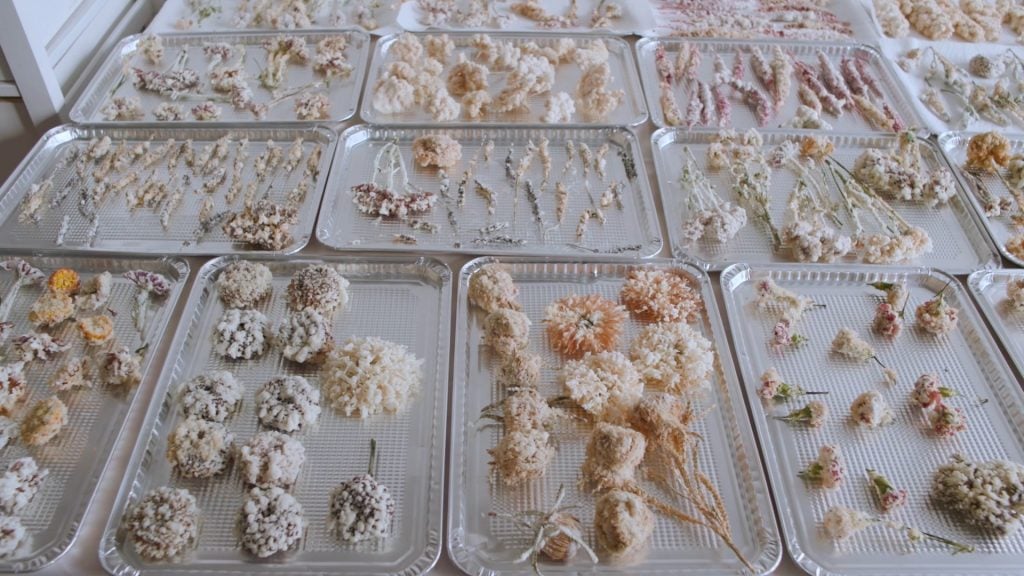Visitors to Anicka Yi’s installations often find themselves depending on senses they are not used to using in the more visual art world: smell, touch or taste. His works draw on sometimes more ephemeral but deeply evocative elements that arouse memories and associations, to question “the biopolitics of our senses”, according to the artist.
“I grew up in a very pungent house and was very aware of how smell starts to create these forms of identity around these invisible olfactory molecules,” Yi explained in an exclusive interview filmed as part of of Art21’s Bodys of Knowledge Series. “In the Western world, we really tend to dismiss very pungent smells as a sign of weakness, as a sign of being more animalistic. We’ve left those smells behind in a perfectly sanitized world where we control what we can smell and what we can’t – and that’s an impossible approach to existence.
Yi sees this impulse to sanitize the world as rooted in a very human fear of being erased from existence. “We are going against nature to try to preserve, stabilize and control something that resists all of this.”
Around 2010, Yi started frying flowers and plants in order to explore this fear of destruction. She dipped the plants in a thick paste that masked both the original shape and the smell of the flowers, then dropped them into boiling oil at 300 degrees, to transform them into an entirely new object. “The visuals were definitely something I was aiming for,” Yi said, “but the smell of, like, french fries…it was very compelling me, you know, fry a lot of these.”

Production from the Season 11 episode of “Art in the 21st Century”, “Body of Knowledge”, 2023. © Art21, Inc. 2023.
A similar fear often follows society’s growing reliance on technology and machines, from factory automation to artificial intelligence. “We have a very limited imagination when it comes to machines. We have a lot of anxiety about them replacing us,” Yi said. “But what if we could relate to them in a more optimistic way?” This question led the artist to create his series of ‘aerobic’ sculptures inspired by jellyfish, which took over Tate Modern’s Turbine Hall in 2021-22.
“Machines respond to and detect each other using high-frequency radio waves. And they are able to detect the heat signatures of visitors,” Yi said of the works. “Some aerobes are curious about visitors, while others are more shy. It was really important to me that they were unpredictable and had space and time for their own evolution. they are mechanical, and yet they feel palpably alive.
Watch the video, which originally appeared as part of Art21’s series body of knowledge, below.
This is an episode of “Art on Video”, a collaboration between Artnet News and Art21 that brings you clips from artists who are making the news. A new season of the flagship series of the Art21 association Art in the 21st century is now available on PBS. Watch all episodes of other series, like New York close up And Extended gameand learn about the organization’s educational programs at Art21.org.
Follow Artnet News on Facebook:
Want to stay one step ahead of the art world? Subscribe to our newsletter to receive breaking news, revealing interviews and incisive reviews that move the conversation forward.
